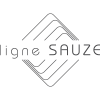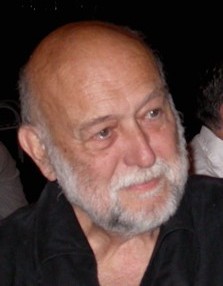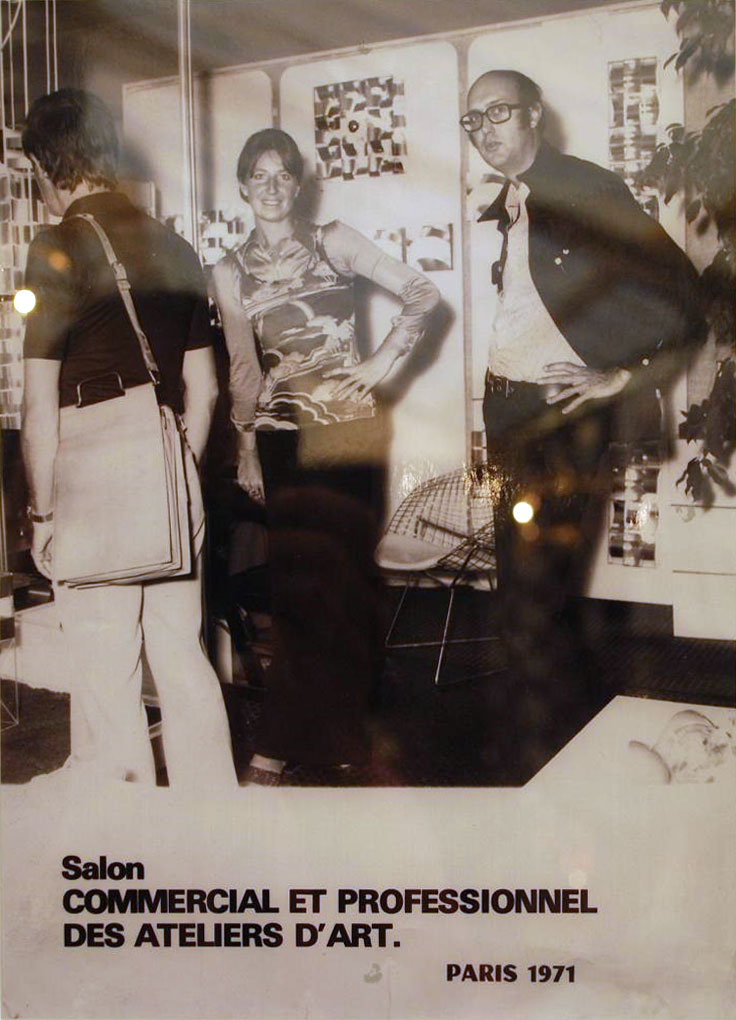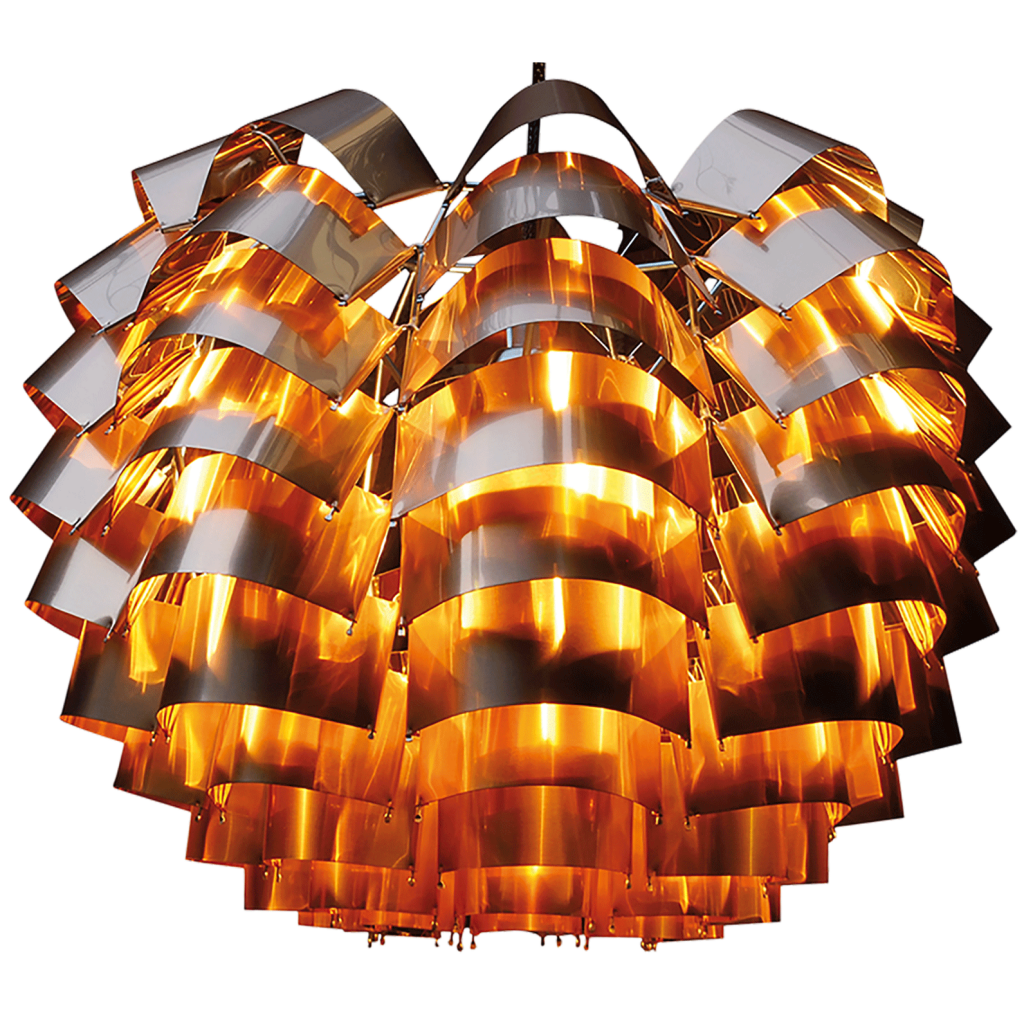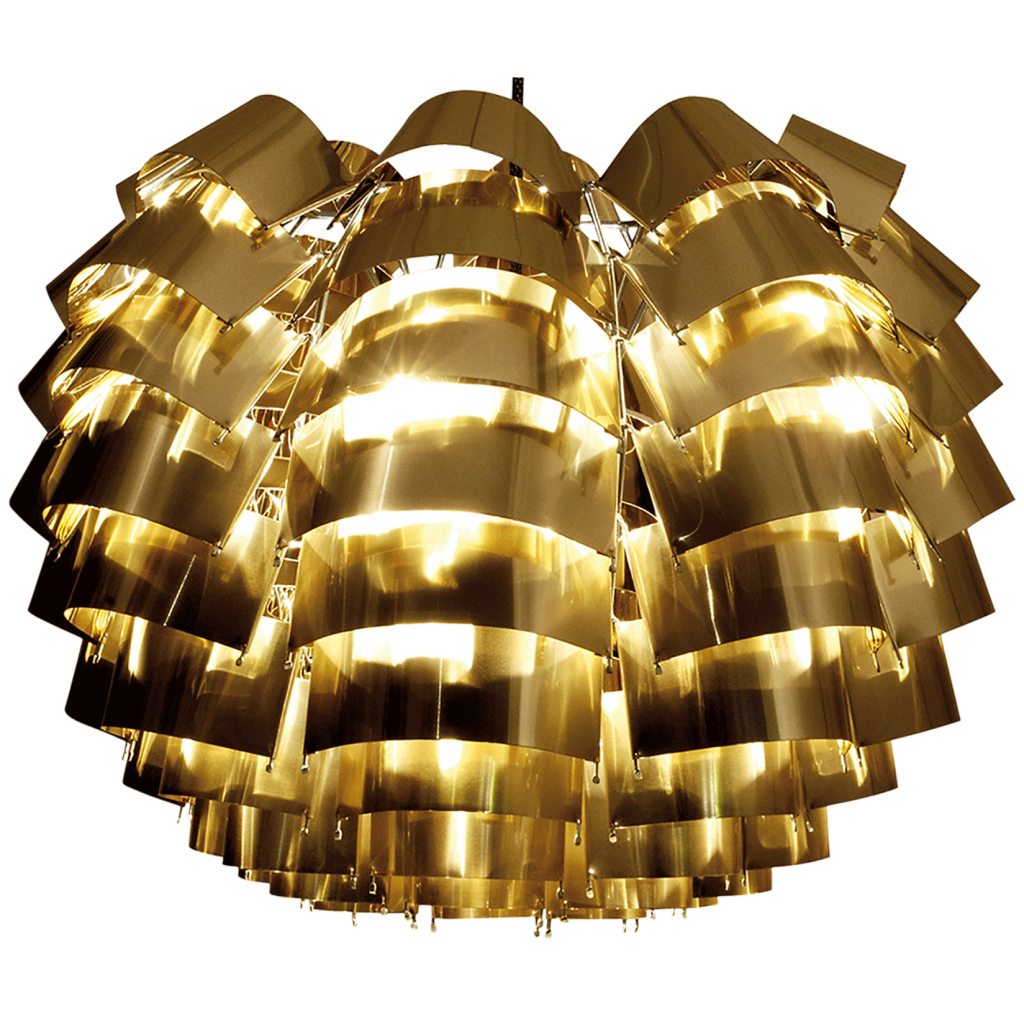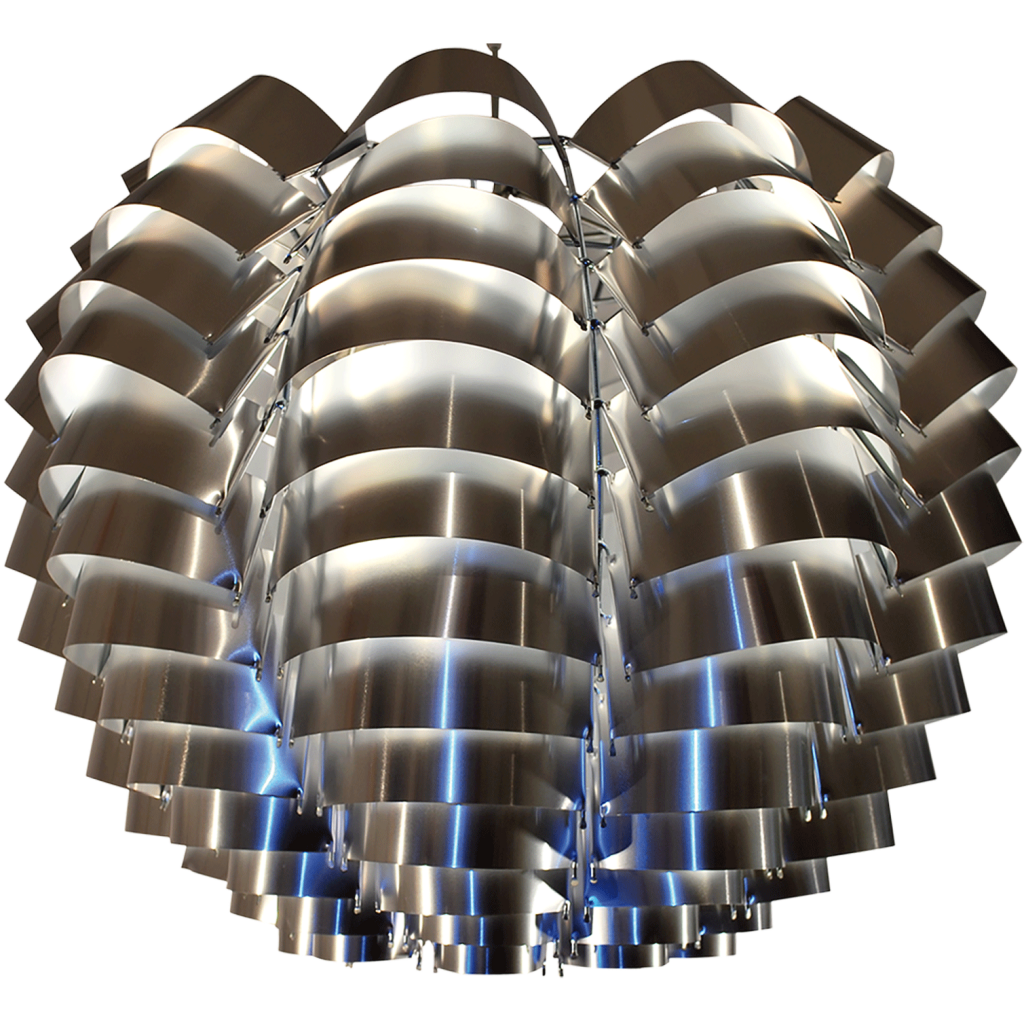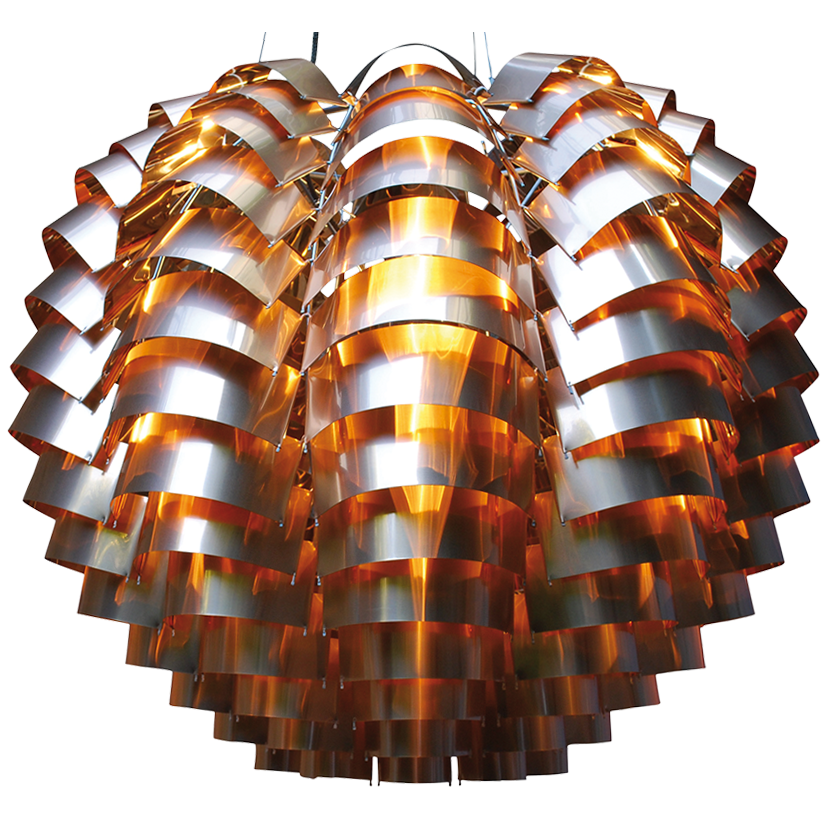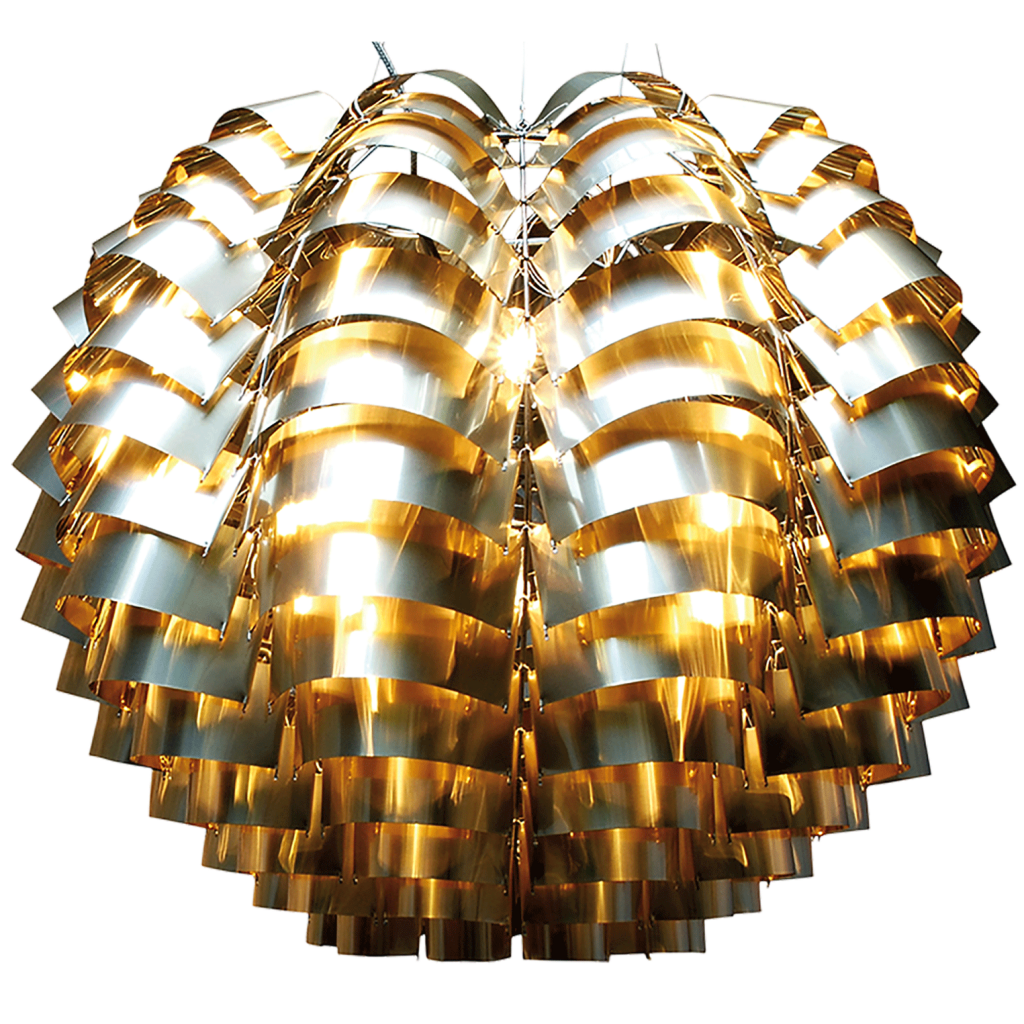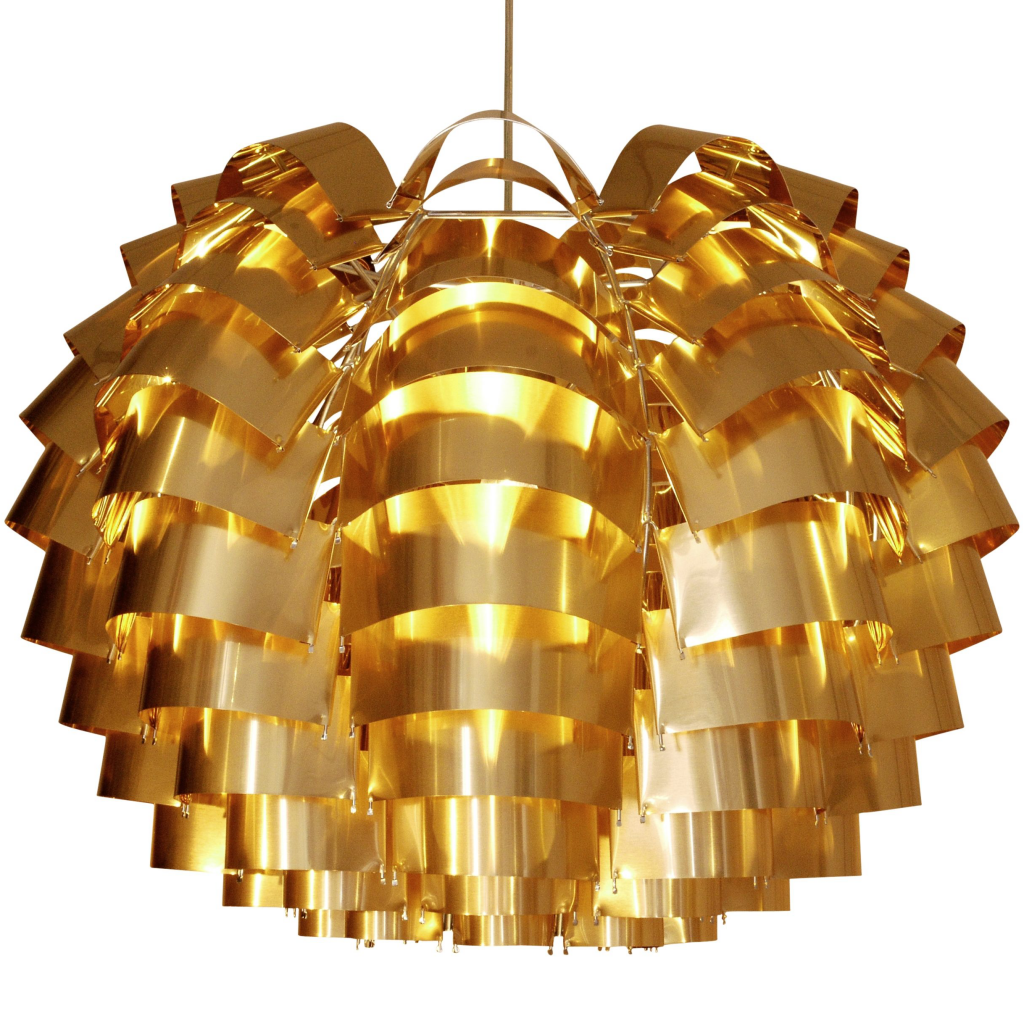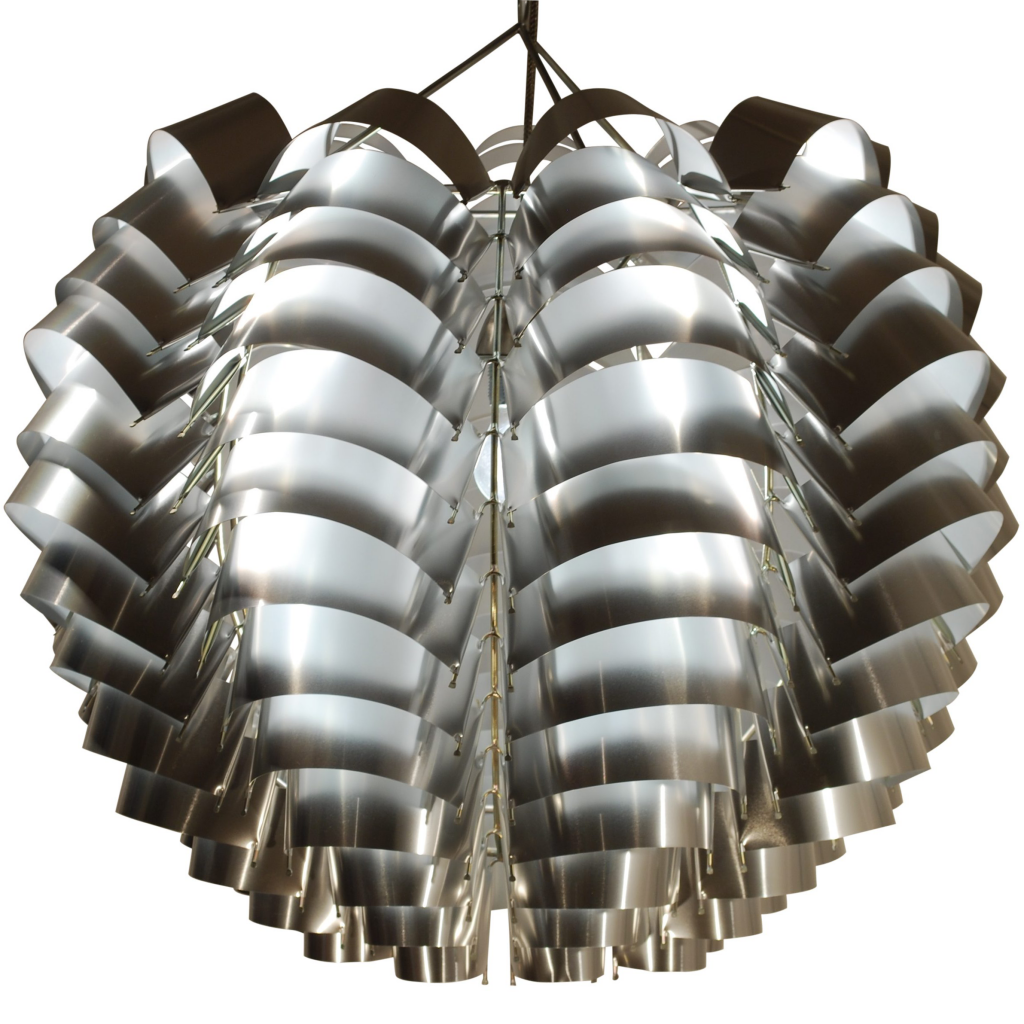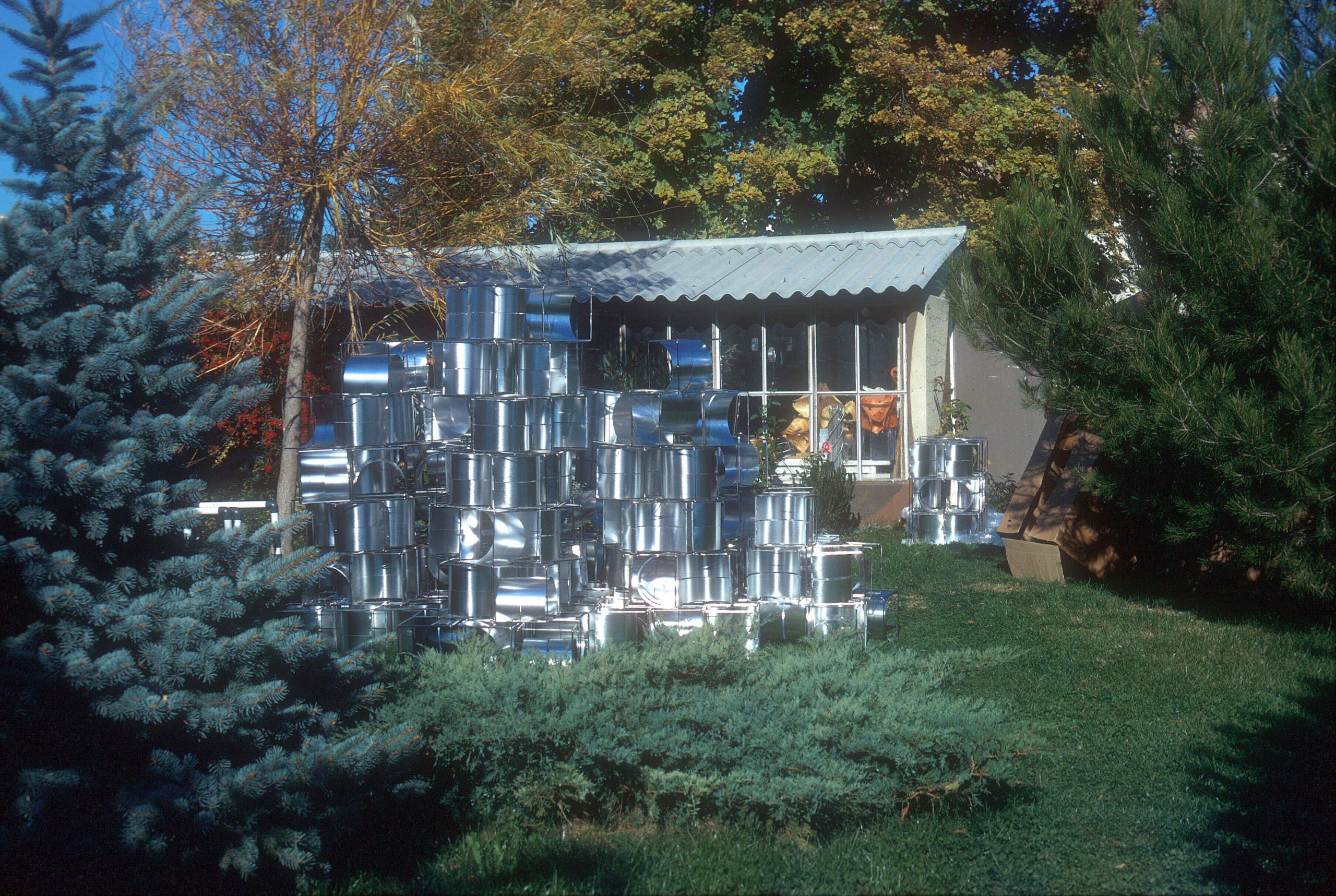Based in Provence in the South of France, Ekilux was born of Sebastien Sauze’s desire to relaunch production of the iconic slatted aluminium lamps designed by his father Max Sauze at the end of the 1960s.
Since their inception, these lamps have never lost their relevance to contemporary design. Like a small Renaissance, they bridge the gap between the innovative 70s, when designers were bursting with creativity, and today’s globalised economic market.
The name EKILUX – made up of ‘equi’ and ‘lux’, meaning balance and light – expresses the quest for harmonious equilibrium between form, proportion, materials and surface effects, which work together to yield a particular quality of light. Each of these four elements has its own values, characteristics and limits, alone and in interaction with the others.
Max Sauze has achieved total mastery over these elements. For over 60 years he has been conceiving, designing and creating all kinds of shapes in a multiplicity of materials. These forms are sometimes devoid of any reference or connotation – they are what they are, simply: objects of mystery and beauty, allowing the viewer’s imagination free rein – or they can give playful, sometimes poetic, expression to his associations with a subject, a sentence, an expression, a thought or a pun. Like sculptures, Max Sauze’s lamps are designed to be always beautiful, whether they are lit or not.
In the same spirit, Sebastien Sauze decided his work would also marry art with craftsmanship. His values arise from his deep feeling for his materials. Like the wood smoothed by the experienced hands of a cabinetmaker, metal also needs to be mastered to reveal its hidden alchemy; it has a past. The highly skilled production at the heart of Sebastien’s workshop is essential to the finished object. Everything is done by hand, from raw material to transformation into a completed object, in a series of deft operations that can run into the thousands on larger models.
Each stage in making a lamp requires a great deal of time, sufficient space – and passion. The many soldered joints must be solid, yet supple. Getting the temperature just right requires long experience, as does managing the many constraints imposed by the electro-chemical treatments. Mechanical tools are faithful companions. Often designed for a very specific purpose, each tool continues to evolve in response to the artisan’s needs as he constantly seeks to improve his workmanship. The shapes are varied, unfolding in a spatial geometry where the form they take becomes self-evident.
Drawing inspiration from the workings of nature which follow the path of least resistance, Sauze endeavours to reproduce its methods. From relative disorder emerges organisation, through a process of repetition, sorting and alignment. A certain form of beauty is born, as viewed through the eyes of our culture.
To meet our customers’ varied needs, our range extends from small bedside lamps, through table lamps and floor lamps, to chandeliers with a one-metre diameter. The aluminium range comes in both matte and glossy finishes, with either the vivid light of the colourless “Silver” and “Salmon”, or the warmer ambiance of the glowing “Copper” and “Golden” models. This wide range means SAUZE lamps are a perfect fit for any interior, whether contemporary or traditional, and it is through their sculptural identity that they can be recognised anywhere.
